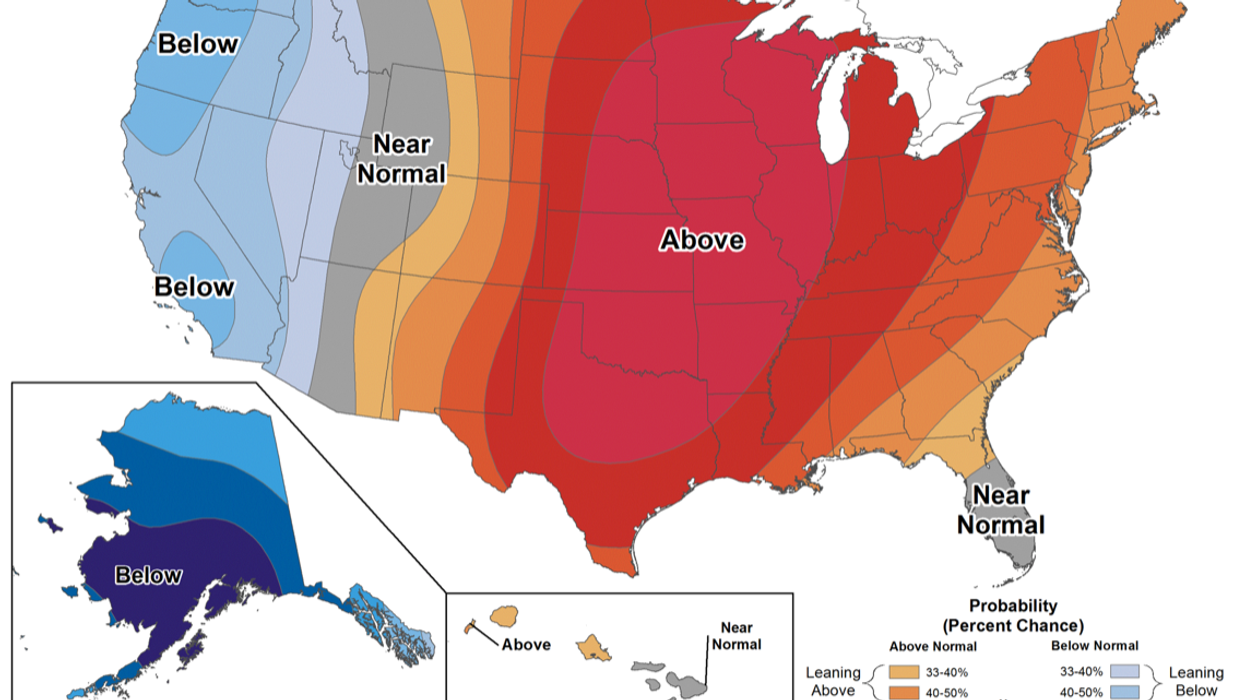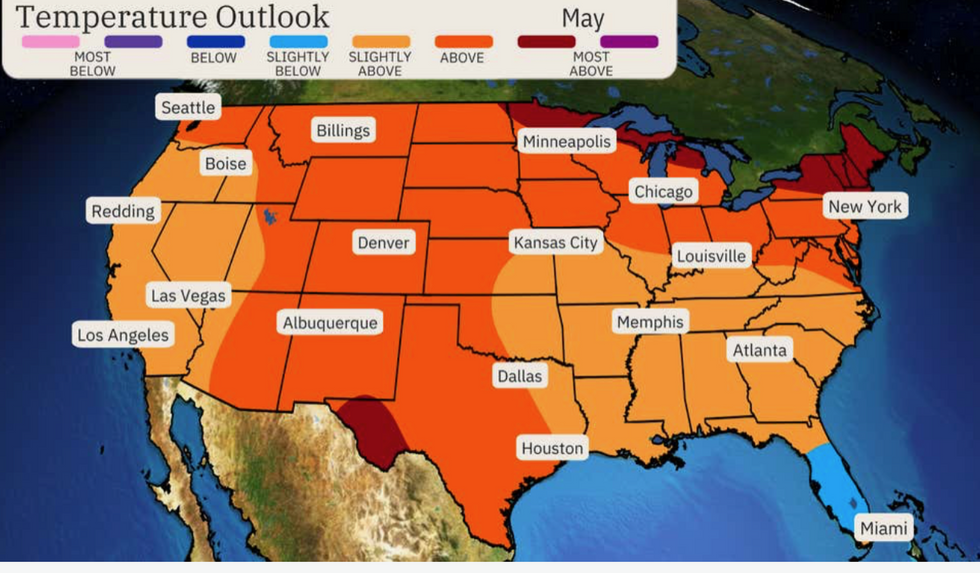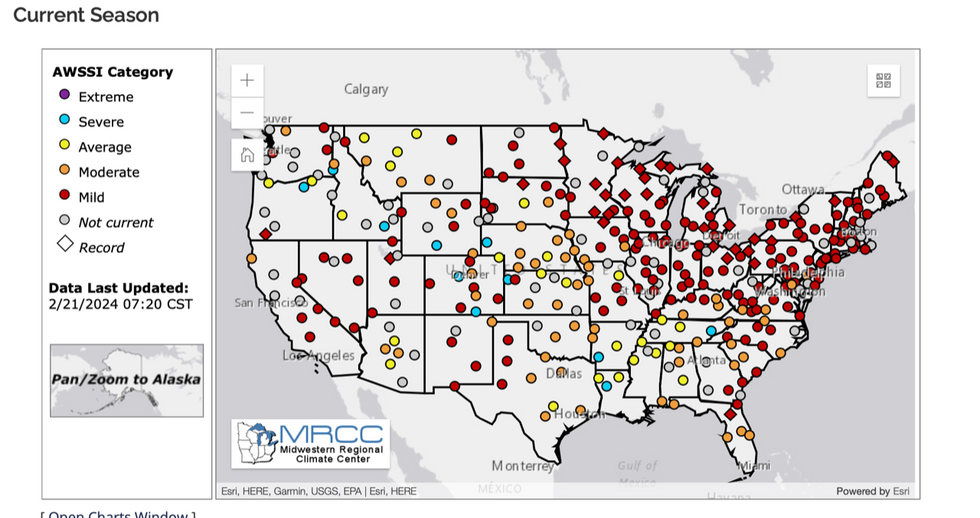US weather forecast: El Nino gives way to new phenomenon as reverse water cooling drives heat surge

Above-average temperatures predicted
|NOAA

As El Nino transitions into La Nina there may be unusual warmth in America
Don't Miss
Most Read
Latest
America is on course for a ‘robust shift’ into an unusually warm spring with balmy temperatures forecast until May.
Thermometers will peak across northern states through the next three months, although the whole country is expected to be hotter than average.
It follows a record mild winter in many states–the unusual weather attributed to a strong El Nino which after almost a year is finally weakening.
El Nino, which set in last June, sees water temperatures around South America rise as the easterly Trade Winds slow or reverse.
The slowing of these prevailing winds stops water being swept away from the coast of Peru, where it stagnates and warms.
El Nino affects weather around the globe, and its transition into La Nina–a reverse cooling of coastal waters–may drive the unusual warmth.

Warmer than average temperatures forecast into May
|THE WEATHER CHANNEL
Weather Channel meteorologist Danielle Banks said: “El Nino giving way to La Nina means a warmer-than-average spring for most of the country.
“Most of the northern tier, the Rockies and Plains will see warmer than average temperatures.
“As we get into March, expect cooler temperatures than average in the south, especially Florida.
“But parts of the Pacific Northwest and also the Upper Midwest and the northeast could be well above average.
“Going into April, the southern Rockies and the Plains are warming up quickly.”
It follows the mildest winter on record across swaths of the US, according to seasonal records.

Most states have come in milder than average through the winter
|MRCC
Most states recorded a ‘mild’ Accumulated Winter Season Severity Index (AWSSI), according to The Midwestern Regional Climate Centre.
The index is based on the intensity and persistence of cold weather and the amount and persistence of snow.
While bouts of cold weather and storms from the north have driven severe winter blasts, the overall picture has been strangely mild.
Weather Channel meteorologist Jonathan Erdman said: “This winter is on pace to be the warmest on record for dozens of cities in the Midwest, Northeast and West.
“A strong El Niño, lack of cold blocking patterns and climate change are all factors in play this winter.”
Southern states will take time to warm up through the next month while the far north will see the first of the heat.
Temperatures will crank up through April, with only the far Southeast seeing hanging on to the cold.
By May, the warmest regions will be the Midwest, the northeast and New England, and the Rockies and Plains, while Florida nudges average.
A Weather Channel spokesman said: “Southern portions of the Rockies and Plains could see a robust shift toward warmer temperatures.
“Temperatures are likely to remain above average in the northern US while staying near or slightly below average in the Southeast.”
Warmer weather will arrive within weeks, according to some forecasters, as air sweeps up from the gulf of Mexico.
Jim Dale, US weather correspondent and meteorologist for British Weather Services, said: “It is going to feel very spring like as warmth sweeps in from the Gulf of Mexico, and some states are going to turn unseasonably warm.
“This is characteristic of El Nino and could be a trend that we will see through spring.”










